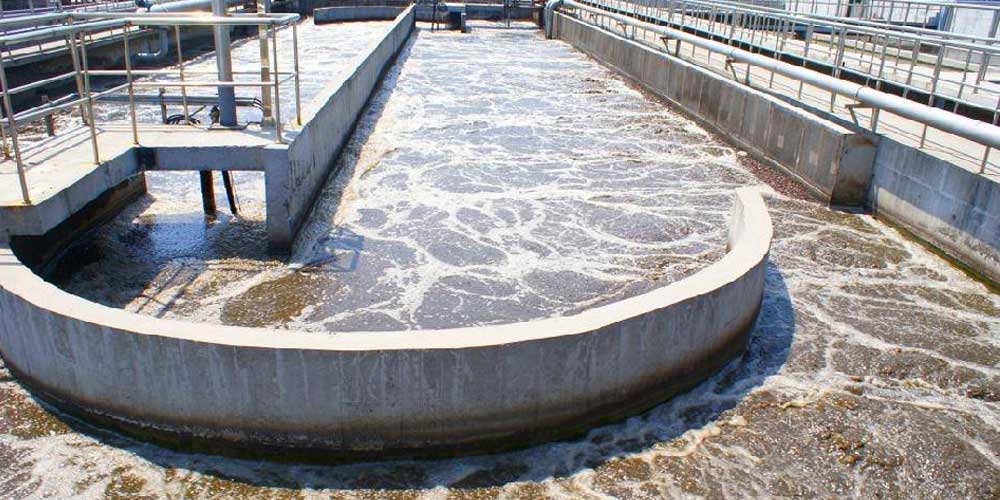Kusamalira madzi onyansa ndi njira yovuta yomwe imafuna kugwiritsa ntchito mankhwala osiyanasiyana kuti athandize kuyeretsa madzi. Flocculants ndi imodzi mwazinthu zofunika kwambiri zomwe zimagwira ntchito yofunika kwambiri pakuchotsa zimbudzi. Nkhaniyi ifotokoza mwatsatanetsatane mlingo wa mankhwala ochizira zimbudzi, mafakitale ogwiritsira ntchito ma flocculants pochiza zimbudzi, ntchito yamankhwala otayira, komanso kusamala pogwiritsira ntchito ma flocculants.
Mlingo wa mankhwala ochizira zimbudzi zimadalira mtundu wa zimbudzi, njira yochiritsira komanso momwe zinthu zilili. Izi ndi zitsanzo za milingo yamankhwala odziwika bwino ochotsa zimbudzi:
Polyaluminium chloride (PAC):Amagwiritsidwa ntchito ngati flocculant, akhoza kuchita ndi zoipa mlandu colloidal particles kubala yokhazikika hydroxide micelles kuchotsa inaimitsidwa zolimba ndi heavy metal ayoni. Nthawi zonse, mlingo wa tani imodzi ya madzi aiwisi ndi pafupifupi makumi a magalamu, koma mlingo weniweniwo uyenera kusinthidwa malinga ndi momwe madzi alili komanso momwe amachitira.
Polyacrylamide (PAM):amagwiritsidwa ntchito ngati coagulant kuti apititse patsogolo kulimba ndi kukhazikika kwa floc. Nthawi zambiri amagwiritsidwa ntchito limodzi ndi polyaluminium chloride, mlingo wa tani imodzi ya madzi osaphika ndi pafupifupi magalamu angapo, koma mlingo weniweniwo uyenera kusinthidwa moyenera malinga ndi momwe zimakhalira komanso mitundu ya zoipitsa.
Ma Flocculants amagwiritsidwa ntchito kwambiri pochiza madzi oyipa, makamaka kuphatikiza magulu awa:
Kusamalira madzi onyansa m'mafakitale: Madzi otayira m'mafakitale amakhala ndi zinthu zambiri zolimba zoyimitsidwa, ma ion achitsulo cholemera ndi zowononga zachilengedwe. Kugwiritsa ntchito ma flocculants kumatha kuchotsa bwino zoipitsa izi ndikuyeretsa madzi oyipa.
Kuyeretsa zimbudzi zapakhomo: Zonyansa zapakhomo zimakhala ndi zinthu zambiri zachilengedwe komanso zolimba zoyimitsidwa. Kugwiritsa ntchito ma flocculants kumatha kuchotsa bwino zoipitsa izi ndikuwongolera madzi abwino.
Kusamalira madzi otayidwa m'mafamu: Madzi otayira pamunda amakhala ndi zinthu zambiri zachilengedwe, nayitrogeni wa ammonia ndi zinthu zina zovulaza. Kugwiritsa ntchito ma flocculants kumatha kuchotsa bwino zoipitsa izi ndikuwongolera madzi abwino.
Madzi otayira m'mafakitale: Kugwiritsa ntchito ma flocculants kumatha kuchotsa zolimba zoyimitsidwa, ayoni azitsulo zolemera ndi zowononga zachilengedwe m'madzi ndikuwongolera madzi.
Ntchito za mankhwala otayira zimbudzi makamaka zikuphatikizapo magulu awa:
Kuchotsa zolimba zoyimitsidwa: Kupyolera mu machitidwe a flocculants, zolimba zoyimitsidwa m'madzi onyansa zimaphatikizidwa mumagulu kuti zisawonongeke ndi kusefedwa.
Kuchotsa ma ion metal heavy: Kupyolera mu machitidwe a flocculants, ayoni azitsulo zolemera m'madzi oipa amasinthidwa kukhala hydroxide precipitates kuti achotse mosavuta.
Kuchotsa zowononga organic: Kupyolera mu zochita za flocculants, organic zoipitsa m'madzi oipa amasandulika hydroxide precipitates kapena oxidized mu zinthu zina kuti kuchotsa mosavuta.
Kusintha kwa pH: Sinthani pH ya madzi oyipa pogwiritsa ntchito alkali kapena asidi kuti muyeretse madzi oipa.
Zomwe muyenera kuziganizira mukamagwiritsa ntchito flocculants:
Sankhani flocculant yoyenera: Ma flocculants osiyanasiyana ali ndi ntchito zosiyanasiyana komanso zotsatira zake. M'pofunika kusankha flocculant yoyenera malinga ndi mmene zinthu zilili.
Yang'anirani mlingo wa mankhwala: Kusakwanira kwa mlingo kudzakhudza zotsatira zake, ndipo mlingo wochuluka udzayambitsa zowonongeka ndi kutayika kwachuma. Choncho, m'pofunika kulamulira mlingo woyenera malinga ndi momwe zinthu zilili.
Sakanizani bwino: Sakanizani flocculant ndi madzi bwinobwino kuti asungunuke ndikuchitapo kanthu.
Samalani kutentha ndi pH mtengo: Kutentha ndi pH mtengo zimakhudza momwe flocculant imayendera ndipo iyenera kuyendetsedwa mosamala.
Nthawi yotumiza: Sep-27-2023


